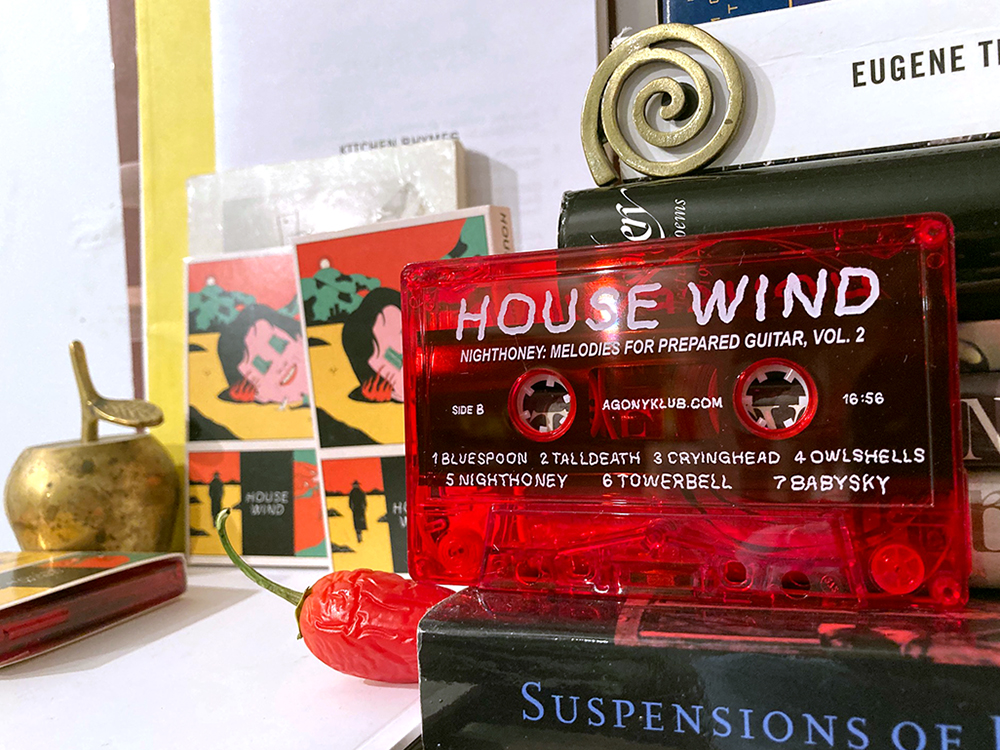
AK025 Nighthoney: Melodies for Prepared Guitar, Vol. 2 hones in on some of the more pristine sounds hinted at from Volume 1. While the focus is still on the melodic, the preparations used to modify the guitar push House Wind’s tones into new sonic territory, offering harmonic textures that sustain a visceral sublime. The compositions shimmer, churn, and resonate with a brimming sensuality evocative of an awakening.
$7 – cassette tape

From House Wind, on his technique:
“From January through August, 2019, I worked on a technique that created incredible harmonic overtones on a prepared 12-string electric guitar. While it took a while to refine, the technique is simplicity itself, and what turns out to be an easy way of making complex live solo guitar music with a minimum of effects. Here’s how it’s done. (Note: I tried this technique on a six-string with poor results.)
1) Make a second bridge on the fretboard by sliding a heavy nail, glass dropper or pen under all the strings at, say, the 12th fret. This raises the strings from the fretboard on both sides of this added bridge.
2) Pluck or strum on the neck side of this second bridge. All playing is done on the ‘neck side’ so to speak. The strings on the right or pick-up side of the inserted bridge, unless muted for effect, are generally left completely free to vibrate.
3) Use metal finger picks on the index and middle fingers of the left hand as mini-slides to fret the notes (a regular slide can work, though with less control and precision). While there’s limited space to play, and you aren’t so much fretting the strings as caressing them, this set-up can generate unusually complex and beautiful bells, chimes and drones, using only a delay pedal to create a more kaleidoscopic effect.
Like playing natural harmonics on a guitar, you begin by locating the sweet spots that chime. What’s different from typical harmonics with this set-up is that overtone clusters seem to develop from the sympathetic vibration of the open strings on the pick-up side. Sometimes the clusters create simple drones, while at other times they could easily be mistaken for violas, organ and brass instruments. What’s striking about playing this way is that the guitar behaves like two different instruments, with the overtone clusters often building separately and distinctly from the plucked or strummed melody parts, maybe similar to the interdependent way melody and drone respond to each other on drone wind instruments like bagpipes.
Since this technique performs best with a light touch to coax out the harmonics, the notes available to play are more limited. I used several tunings for variation. But compared to most prepared guitar set-ups I’ve tried, this one bestowed more than its share of beautiful surprises and made for easy music making nearly every time I picked up the guitar. As always, it’s a double-edged sword, the heightened element of chance also meant the frustration of being unable to duplicate a particularly stunning passage of overtones.”

